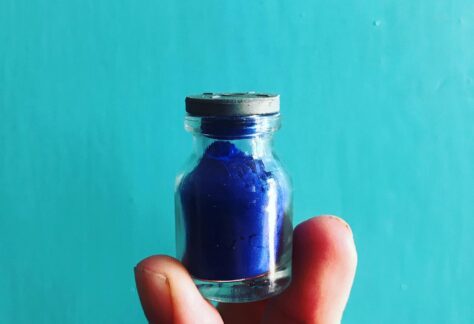
WUNDERKIT – LIVIA SATRIANO
SuperOtiumNapoli

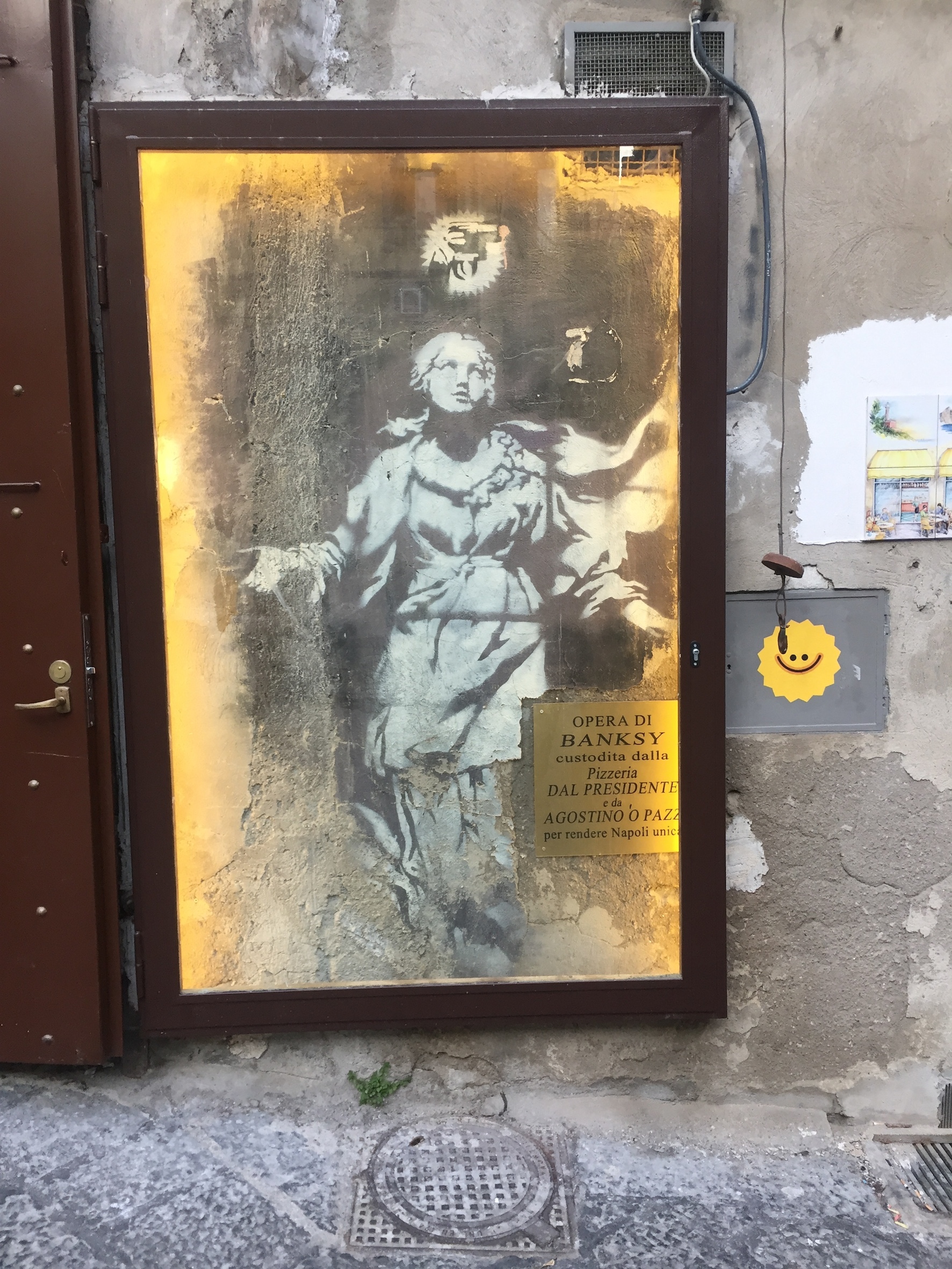
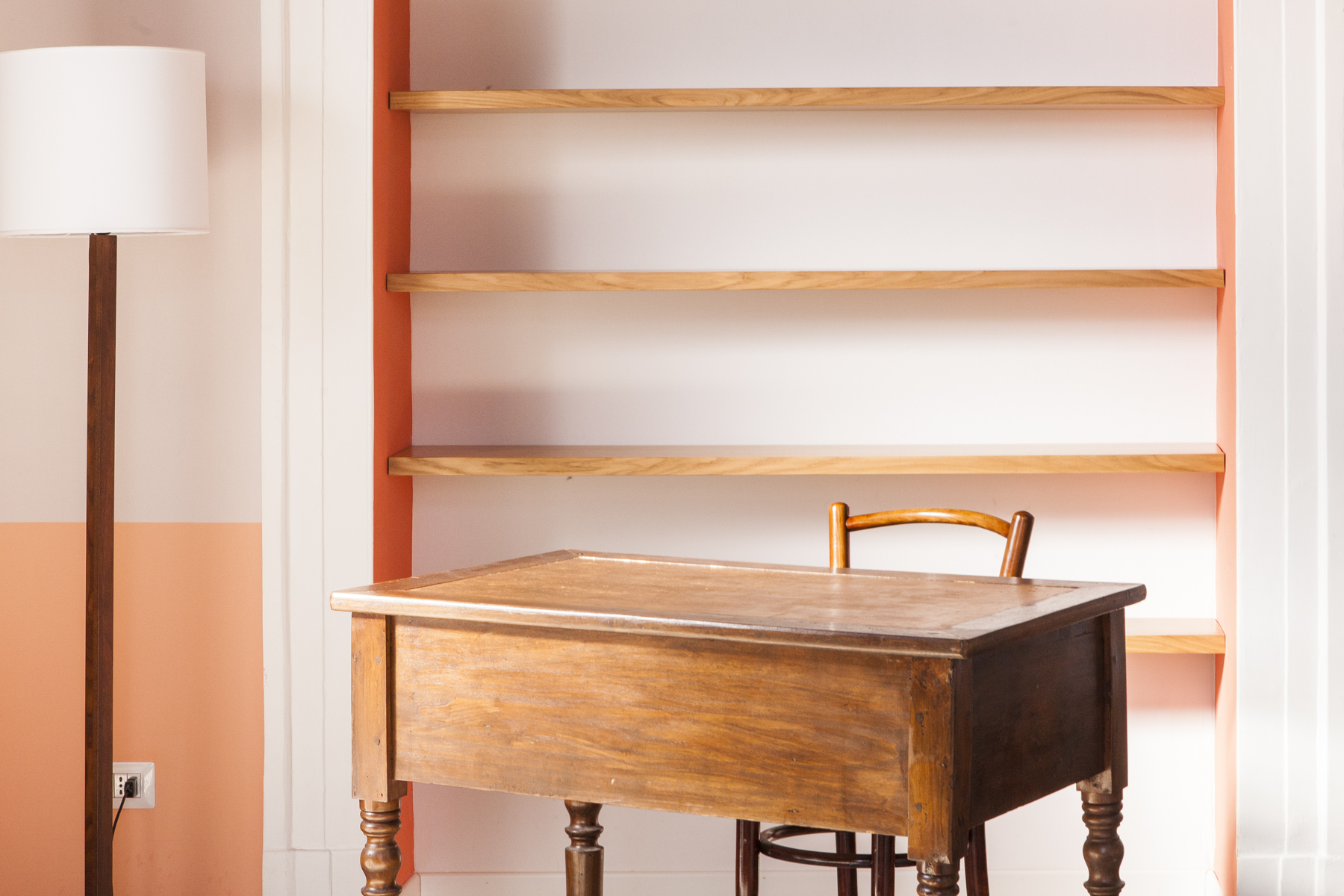
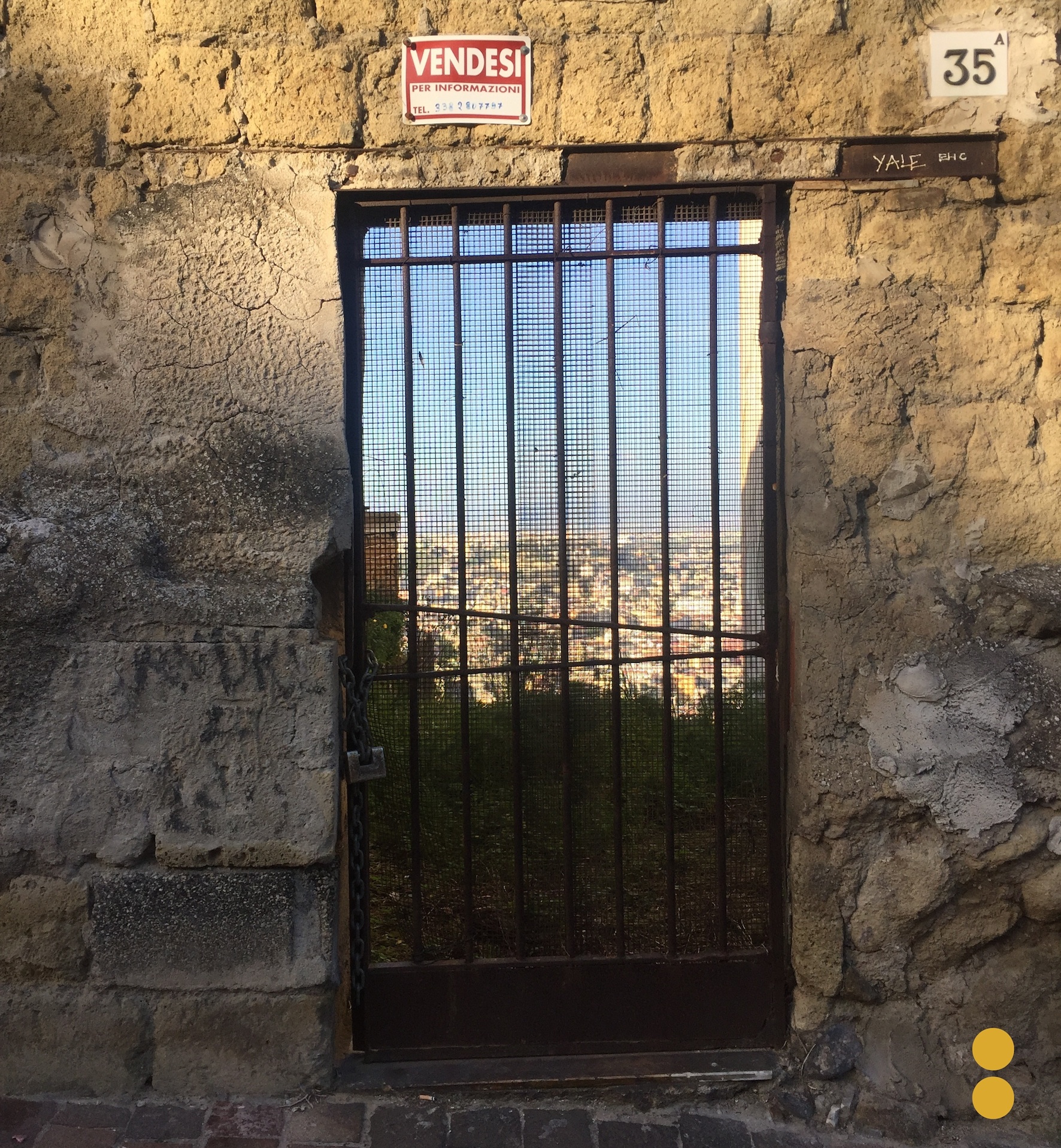

SuperOtiumNapoli

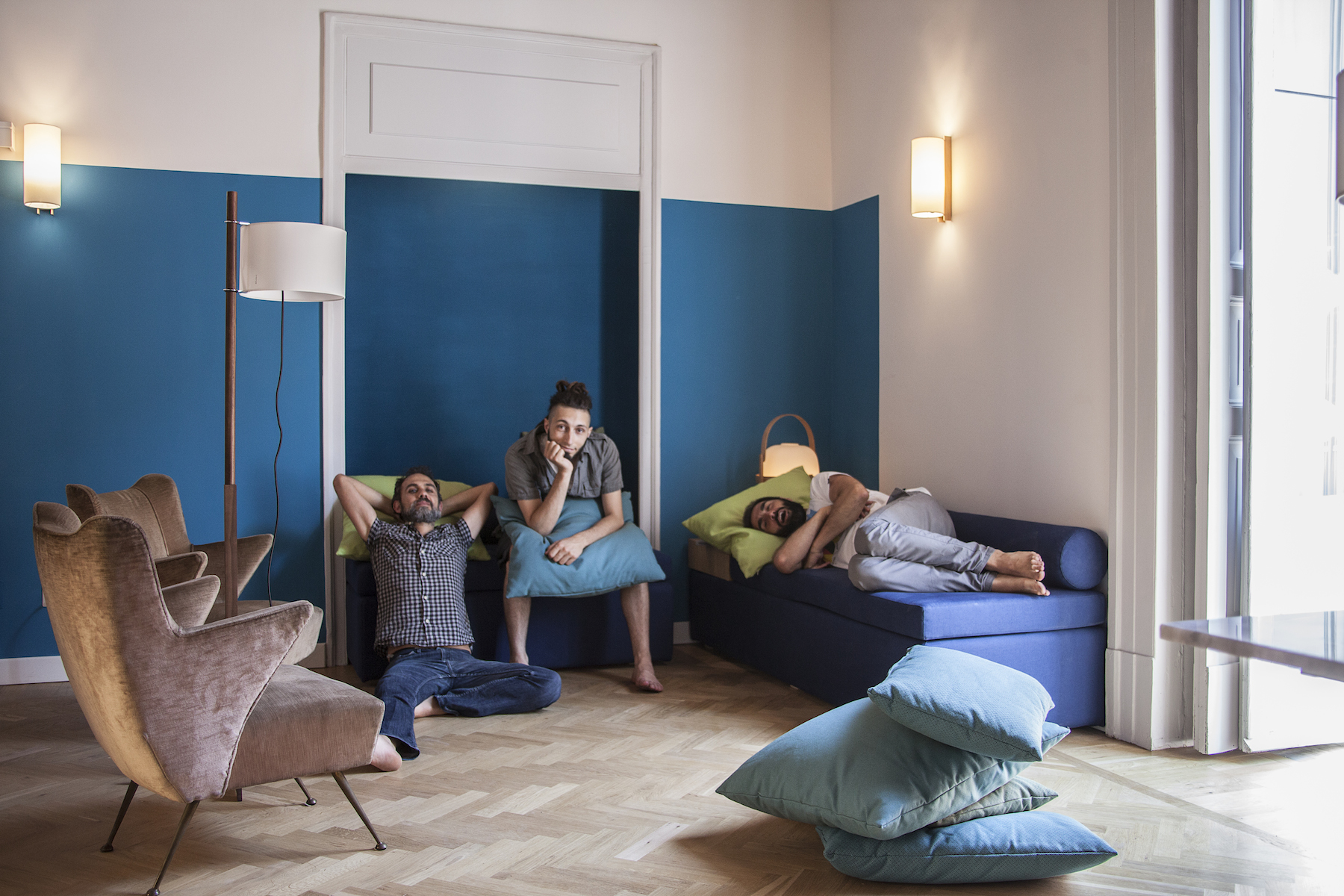

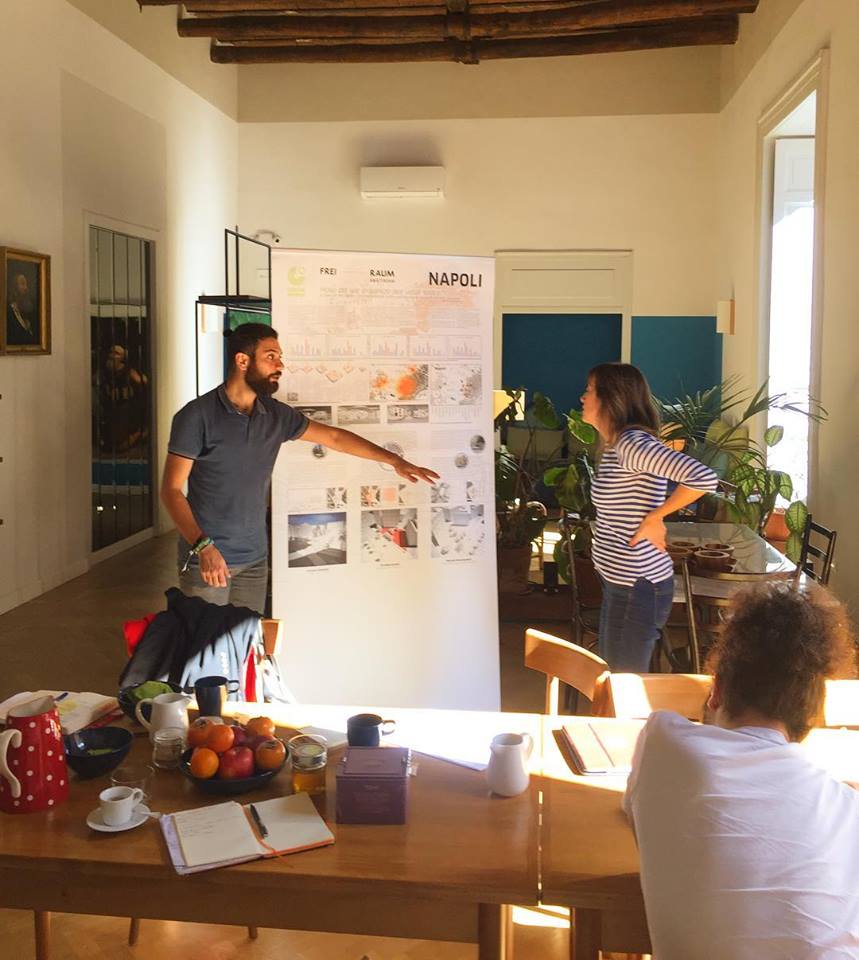




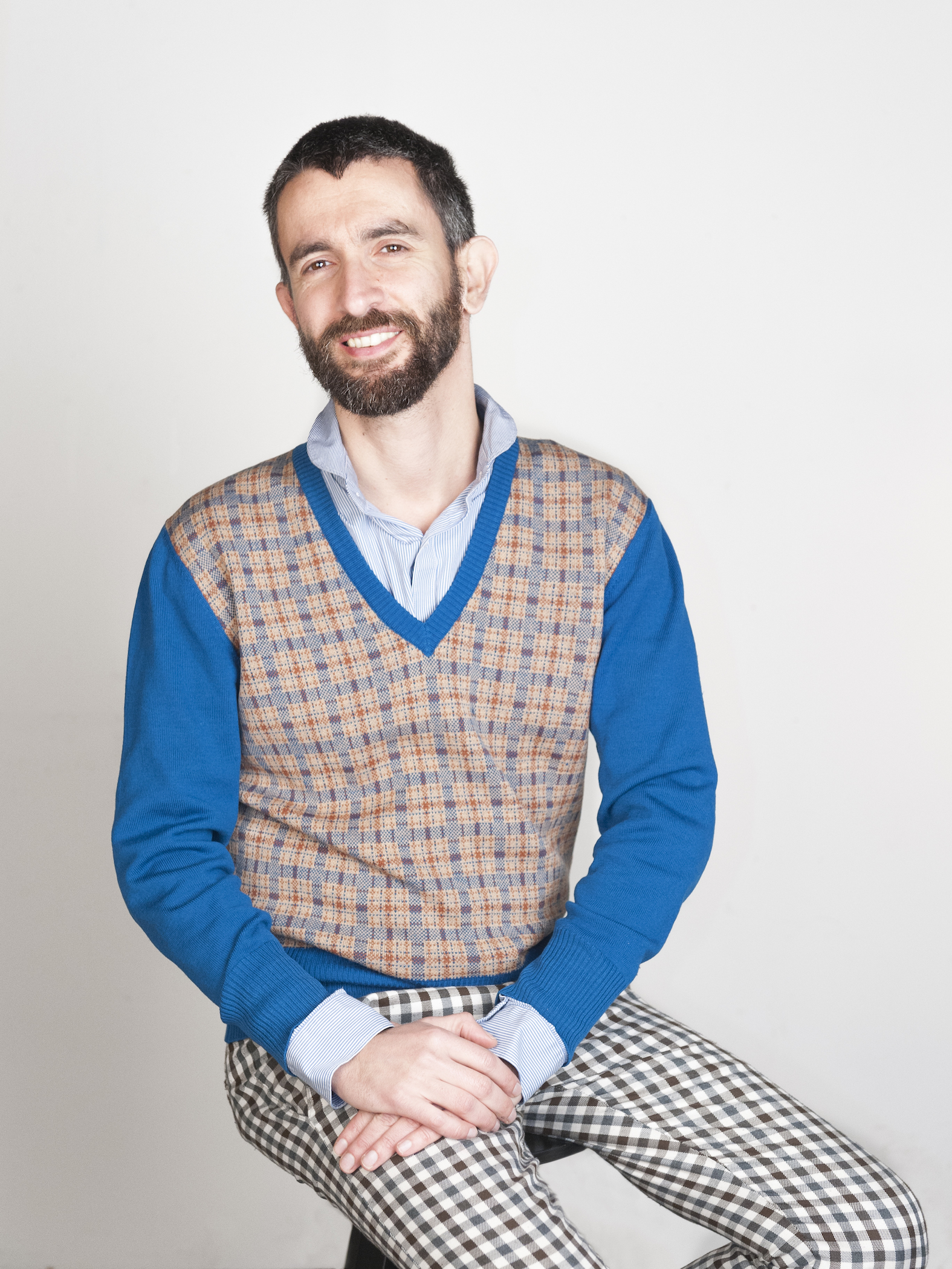
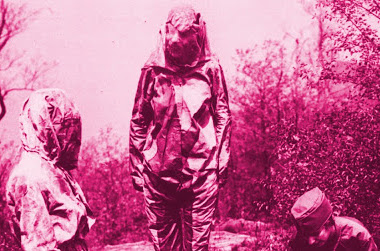
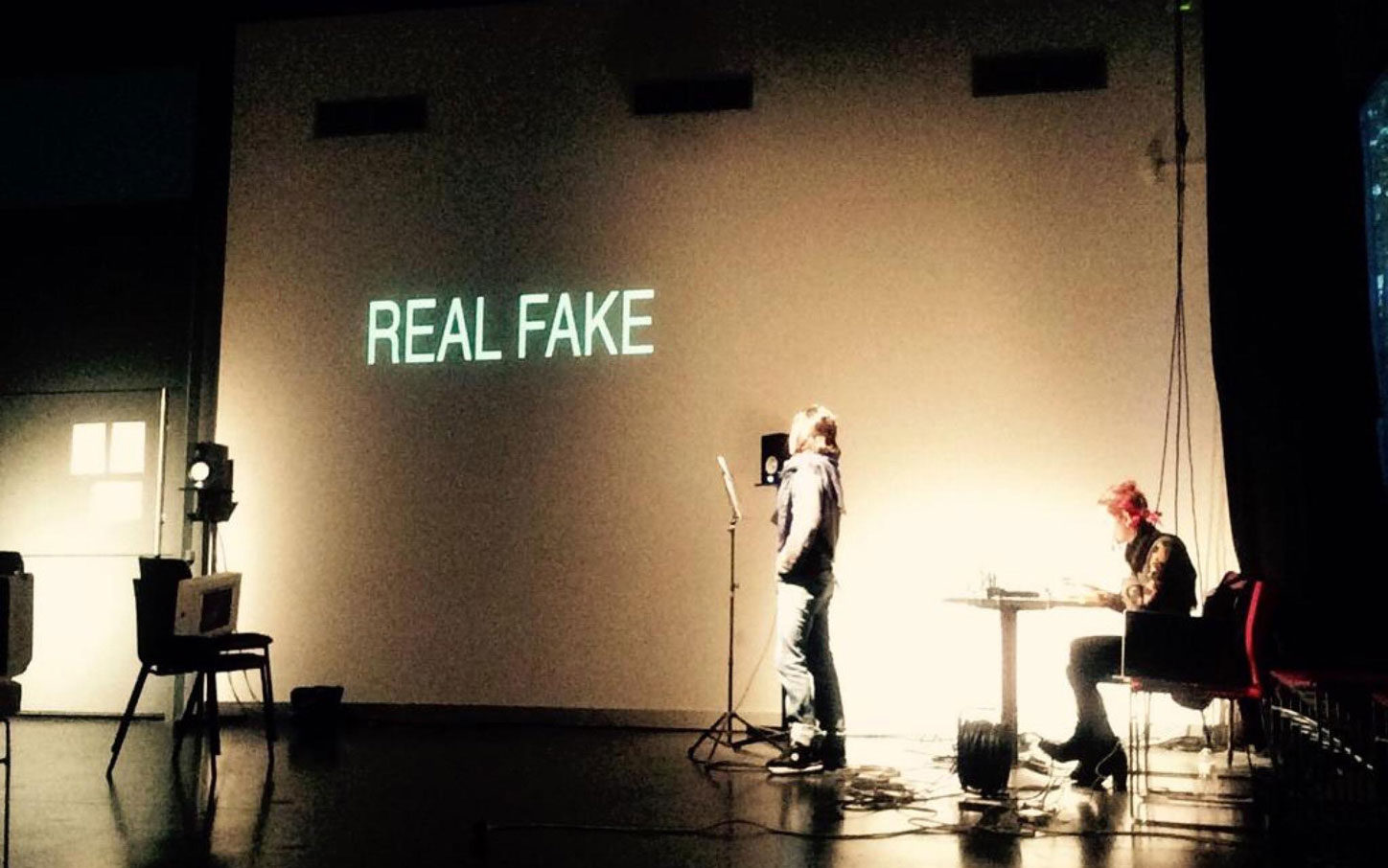

On the occasion of OpenHouse 2019 we invited Bianca Felicori, journalist, communication expert and, among others, creator of the Forgotten Architecture project, to a micro-residence.
The residence becomes an opportunity for Bianca to guide us to the discovery of a great shared archive of Forgotten Architecture together with other guests.
In fact, on the occasion of the residence there will be an informal meeting to enlarge the map and deepen the already mapped places.
Forgotten Architecture has no pre-established rules, but above all it is a project of pure and genuine sharing. The group starts from a first interpretation of the term: Forgotten should not be misunderstood as abandoned or poorly maintained, but has various nuances. Forgotten is the architecture of a great forgotten master, is the work of a minor architect never considered, is the small church of the archistar never studied at university and so on.
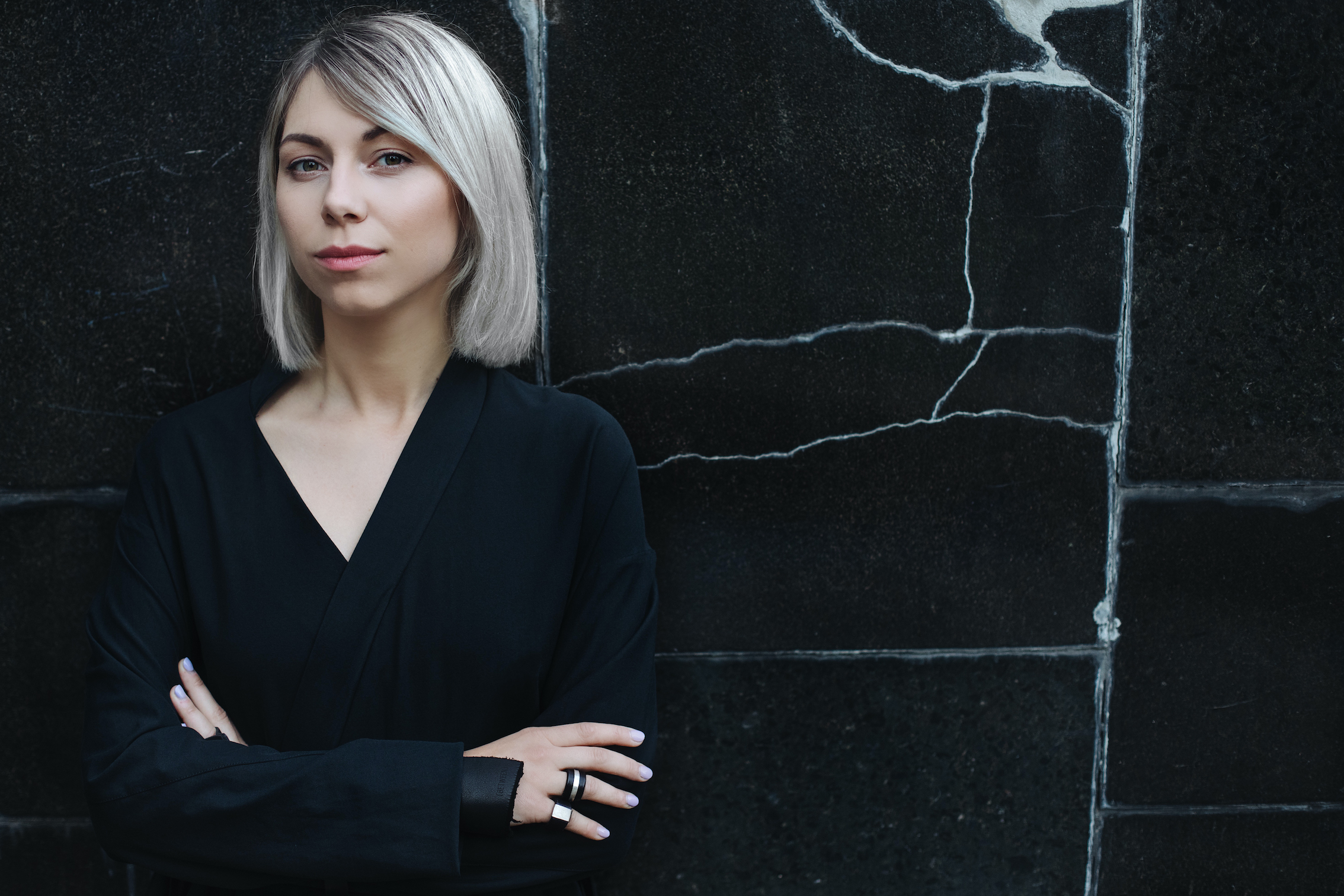
Working between documentary and the imaginary, Škarnulytė makes films and immersive installations exploring deep time and invisible structures, from the cosmic and geologic to the ecological and political. Her blind grandmother gently touches the weathered statue of a Soviet dictator. Neutrino detectors and particular colliders measure the cosmos with otherworldly architecture. Post-human species swim through submarine tunnels above the Arctic Circle and crawl through tectonic fault lines in the Middle Eastern desert.
Winner of the 2019 Future Generation Art Prize, Škarnulytė represented Lithuania at the XXII Triennale di Milano and was included in the Baltic Pavilion at the 2018 Venice Biennale of Architecture. With solo exhibitions at CAC, Vilnius in 2015 and Kunstlerhaus Bethanien, Berlin in 2017, she has participated in group shows at Ballroom Marfa, Seoul Museum of Art, Kadist Foundation, and the First Riga Biennial. Her numerous prizes include the Kino der Kunst Project Award, Munich (2017); Spare Bank Foundation DNB Artist Award (2017), and the National Lithuanian Art Prize for Young Artists (2016). She received an undergraduate degree from the Brera Academy of Art in Milan and holds a masters from the Tromsø Academy of Contemporary Art.
Her films have been screened at the Serpentine Gallery, UK, the Centre Pompidou, France and in numerous film festivals including in Rotterdam, Busan, and Oberhausen. She is a founder and currently co-directs Polar Film Lab, a collective for analogue film practice located in Tromsø, Norway and is a member of artist duo New Mineral Collective, recently commissioned for new work by the First Toronto Biennial.
During the residency,
During the residency, Emilija will explore the underwater and underground Naples for the production of her latest project and will present her works through studio visits and a round table.
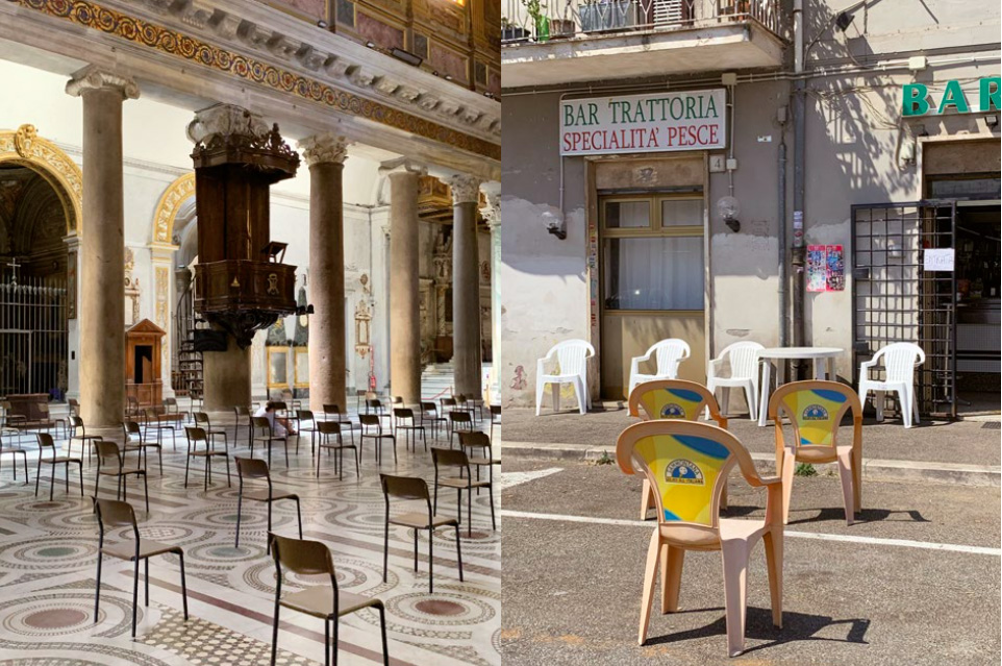
the first artist residency of the year 2021 in the spaces of SuperOtium which will take place from 15 to 28 February 2021.
A year after the first lockdown taken in Italy due to the coronavirus emergency, photographer Giovanna Silva returns to Naples, the fourth stop after Milan, Genoa and Rome, for a residency to rediscover a city proud of its architectural and urbanistic charm, and at the same time protagonist of a change that is marking the way of life and crossing all those metropolises with the highest population density in Italy.
“Since I can no longer travel abroad, I am considering a book that combines my architectural walks through the cities of Italy.
My interest is architectural, but also exploratory and performative; I take photos with my i-phone, not for lack of a camera, but precisely because the i-phone allows you to be more discreet and immediate.
I take photographs following the paths and advice of the people I interview, creating and following a ‘map’ of stories that allow me to get to know the city better.”
The “stories to be told about the city of Naples”, due to the ambivalent way in which it is often perceived and enjoyed by those who visit and live there, is one of the themes that has fascinated Lorenzo Xiques in recent years, a young curator and queer activist in the Naples area, whose latest exhibition “Vendi Napoli e poi Muori” inspired by the novel of the same name by Gennaro Ascione” held at Galleria Fonti.
“The way of crossing and living the city, in particular that of Naples, is very different depending on whether you are a queer person or a member of the cisgender society.
Queer communities, or in general those oppressed by the patriarchal system, have always had to identify and create “SAFE” places and paths where they can freely live their identities. These are places and stories that are often not beaten (neither on the road nor on the typewriter) by the people who arrive on the territory, as they are hidden places by their nature or because they are deliberately censored.”
The meeting between Giovanna Silva and Lorenzo Xiques will become the occasion for a research laboratory that will send the two actors on an advance scouting trip through the city of Naples, in search of places and stories – in a period marked by the restrictions due to the “yellow zone” imposed by the DPCM – and of new suggestions and revelations useful for the restitution of a “map” in images of the post-pandemic city.
The year 2020-21, the year of the pandemic, will be remembered above all for its images, and their ability to tell the stories – or the silences – that marked it.
The completed project will be presented on 27 February at 4 pm at the end of the artist’s residency.
During the residency it will be possible to meet Giovanna Silva by booking a studio visit.
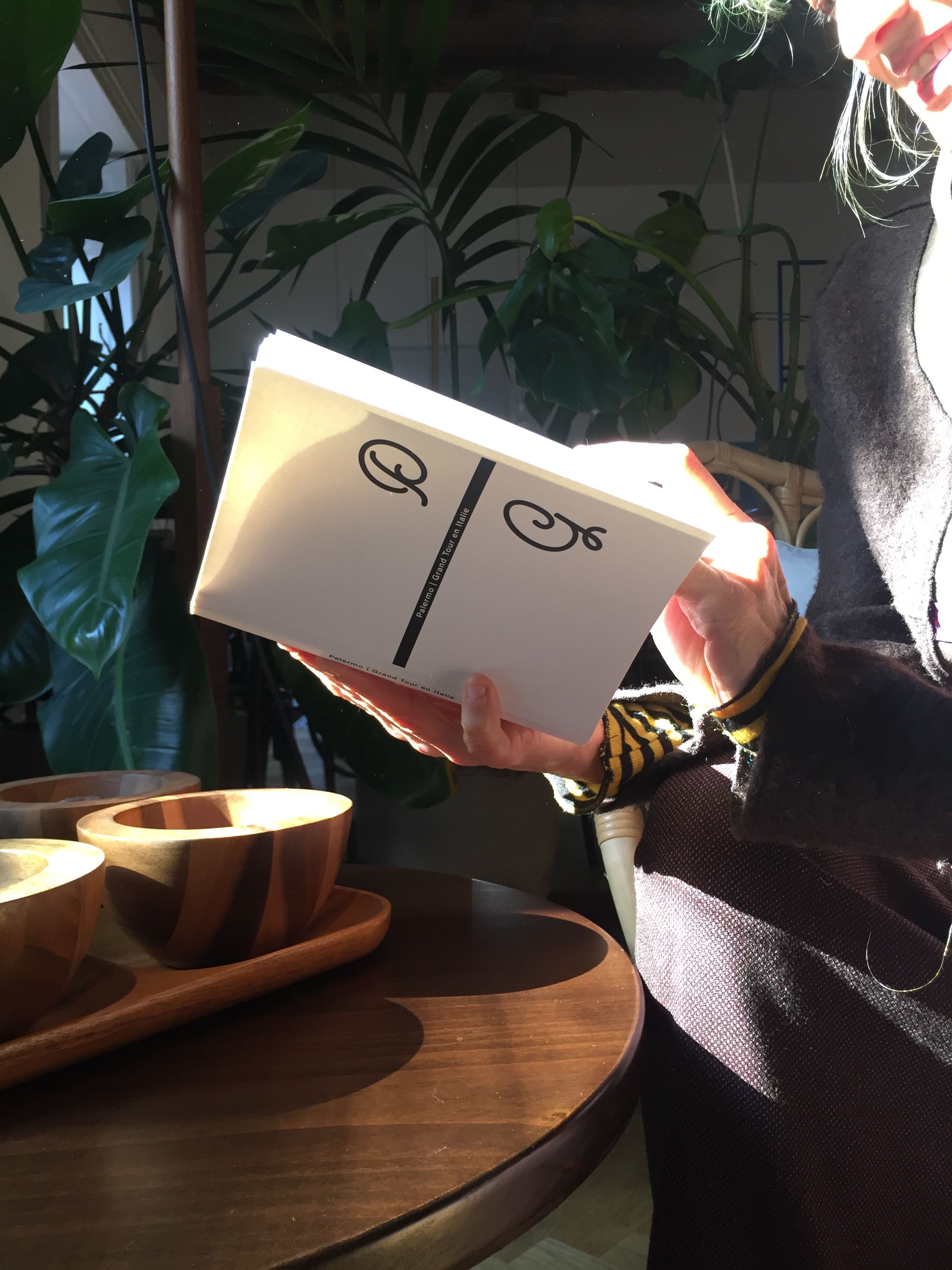
The residence is developed with the collaboration of SuperOtium, which, as a residence space, will host the artists, will be a study / laboratory of their work and will contribute to the construction of the Neapolitan edition program.
The Neapolitan stage of the project is inspired by the Grand Tour, intended as a practice of training and artistic production in the footsteps of the tradition of travel made by intellectuals and artists between 700 and 800.
The themes related to the exploration of unknown places thus become an opportunity for meeting and migrating acquires a positive connotation, becoming synonymous with exchange, that intertwining with the different that leads to an enrichment and expansion of knowledge. The intent is to narrate Italy through the gaze of some selected artists and artists who, through their work which consists in the creation of a real travel diary, express the impressions received by a specific geographical area with its people, its culture and its historical – artistic heritage.
The protagonists of this residence, all female, are: Simona Da Pozzo, Serena Fineschi, Stefania Mazzola.
The artists will take advantage of the residence and meeting with the realities of the Neapolitan city to create new works, in the form of an in-progress project with drawings, images, sculptures and artist notebooks.
The visiting artists will be joined by the visiting artists: Maura Banfo, Sophie Ko, Valeria Manzi, Concetta Modica, in addition to the contribution of Giuseppina Giordano in correspondence with Japan.
The residence, which will begin on March 8 and will engage the artists in a series of workshops and meetings that will end on March 14 with a special white night.
The traces of the work produced during the residency will find space, thanks to the collaboration with MetroArt / ANM of Naples, in four advertising spaces in as many subway stops in dialogue with the design of the art stations. A preview of what will then be the final exhibition.
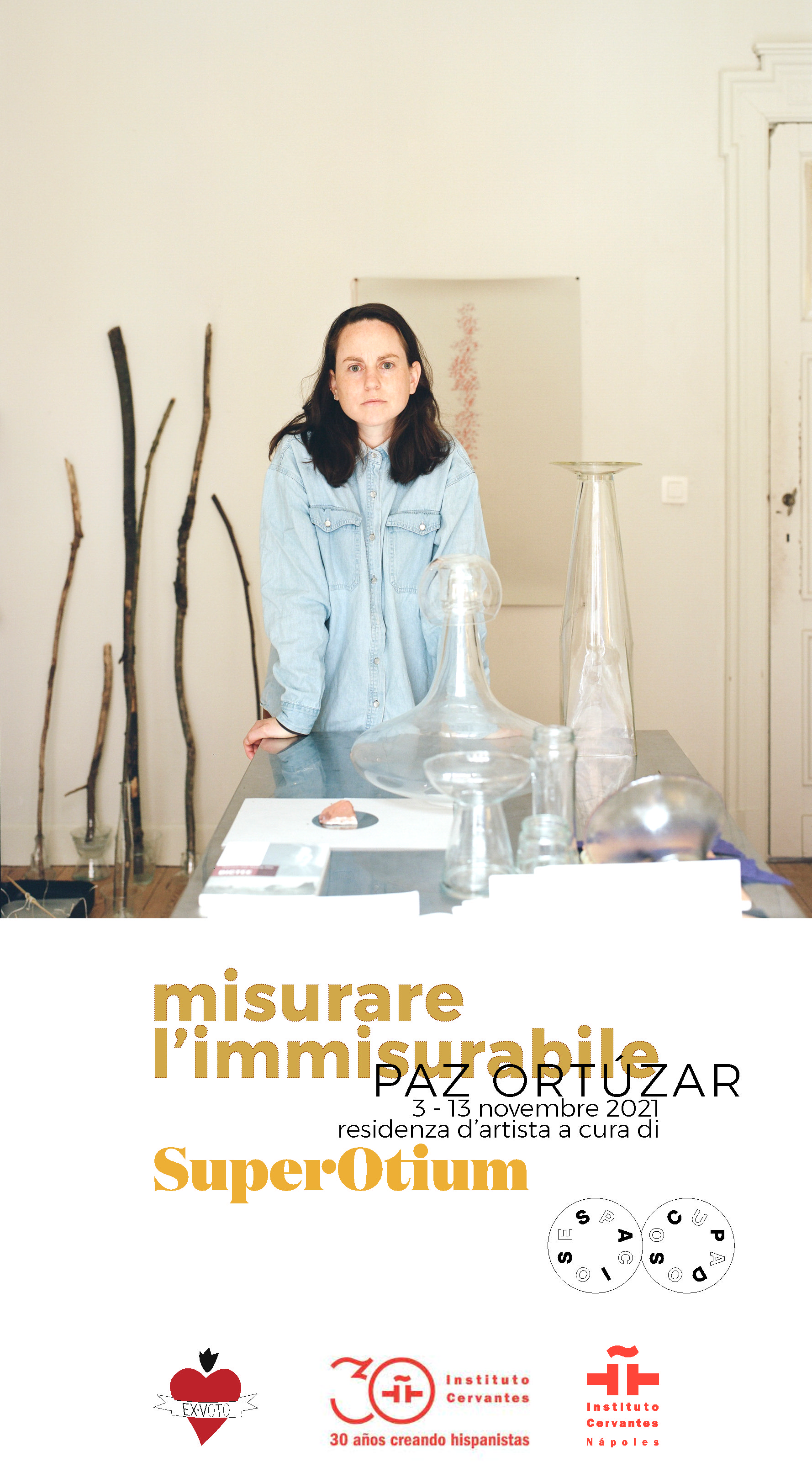
In the framework of Espacios Ocupados program, in occasion of 30th anniversary of Cervantes Institute, SuperOtium presents Measuring the Unmeasurable. As part of its program the project is a research residency involving the Chilean artist Paz Ortúzar for a confrontation with the city, through explorations and exchanges with local people and realities, on the theme she has been pursuing of measurement systems, understood as an authoritarian imposition, made of irremovable infrastructures and truths, where inaccuracy becomes an action of heretical disobedience. The residency will end with a public restitution of the artist’s research in the form of an open round table.
Agenda of the residency:
On 4th, 5th, 6th and 7th November exploratory tours, meetings with representatives of the cultural world, and planning of actions in the public space.
8th, 9th, 10th, 11th and 12th November actions in the public space related to the artist’s research and portfolio review by appointment.
10th November public restitution meeting open to the city, by appointment with local guests to be confirmed.
Quoting the artist: “During the last couple of years, I have been researching about the metric measurement system and the relevance that it carries as an underlying infrastructure that allows the persistence of the savage capitalism in which we are immersed.
The metric system was created in Europe in the XIX century, from there it was imposed to its colonies and later, to the rest of the world. This caused the disappearance of a multiplicity of systems of measuring specific to each city or village, which were also tied to particular spiritual beliefs. Once the metric system was imposed, those beliefs were also emptied, giving absolute power to Catholicism reigning in most Western European countries. In this way, the metric system and Catholicism forced a monotheism that annihilated any kind of paganism both in science and in the spiritual realm.
Considering this relationship between measurement and divinity, there is a strong connection between some of the objects, symbols, and actions performed by the Catholic religion around the consecrated communion wafer and the handling, cleaning and display of the Platinum-Iridium Kilogram Prototype, also commonly referred to as The Big K. [1]
Naples was one of the cities in Europe that resisted the standardized use of the metric system, maintaining its measurements (there were many and very diverse) for many years even though Italy was one of the original countries that signed the Metric Convention. Furthermore, Naples is still one of the cities with more Catholic churches in the world. These facts make Naples a strange blend, a divergent space with a sharp tension held by these two vertical institutions.
My project consists of a pilgrimage of several days visiting the most important Catholic churches in Naples. During those visits and walks, I will perform a series of simple actions weaving together some of the symbols and rites linked to both the communion wafer and The Big K.”
Paz Ortúzar, is a Chilean interdisciplinary visual artist and researcher, with a practice in writing and translating. Her present artistic research is focused on systems of beliefs, feminism and the hegemonic standardization of knowledge in colonized territories. Through her practice she seek to apprehend and question physical, cultural, and spiritual truths. Her work is composed process-based pieces that use language, time, and found objects as raw material.
She earned a Bachelor in Fine Arts and a Certificate in Latin-American Art Aesthetics (PUC, Chile). Later on, she studied a Master in Fine Arts with an interdisciplinary focus (UPENN, USA) and an Advanced Master in Artistic Research in a Socio-Political Context (Sint Lucas Antwerp, Belgium). Her work has been exhibited internationally at venues such as Fjord Gallery, Philadelphia and The Arnold and Sheila Aronson Galleries, New York (USA); MUCHA, Mendoza (AR); FRANZ JOSEP KAI 3, Vienna (AT); Goethe Institute, Salvador (BR); Galería Gabriela Mistral in Santiago (CL) and RAAT, Antwerp (BE) among others.
Additionally, she have worked collaboratively with curators, artists and collectives developing exhibitions and independent curatorial projects.
SuperOtium, an art-residency space for contemporary cultures, which will curate the residency project. SuperOtium will welcome and mentor the artist during her residency;
Ex-Voto, radical public culture, project promoter, realizes projects centred on the practice and theme of active socialisation and co-creation, as tools for enhancing the activity and resources of the territory, communities and communities.
Instituto Cervantes Nápoles, is an institution created by the Spanish State in 1991 with the aim of promoting the teaching of the Spanish language, disseminating Spanish and Hispano-American culture and participating in the development of cultural exchanges throughout the world. It is based in Madrid and in Alcalá de Henares, the birthplace of the writer Miguel de Cervantes. The Instituto Cervantes is present in 88 cities in 45 countries on the four continents.
Espacios Ocupados, The project Measuring the Unmeasurable is part of the Espacios Ocupados Programme, an initiative that seeks to develop trajectories in different directions that serve to relate Spanish-speaking artists to contexts, cultural actors and places in the centres of the Cervantes Institute network, with the idea of bringing artistic practice and its creators closer to the citizens of the world.
We believe that it is time to focus on projects that foster relationships between different people, creating common channels of communication and bringing people together through art to be surprised by ever-changing situations. Through artistic residencies in specific places, other ways of thinking and feeling arise in order to be able to understand and share questions and possible answers.
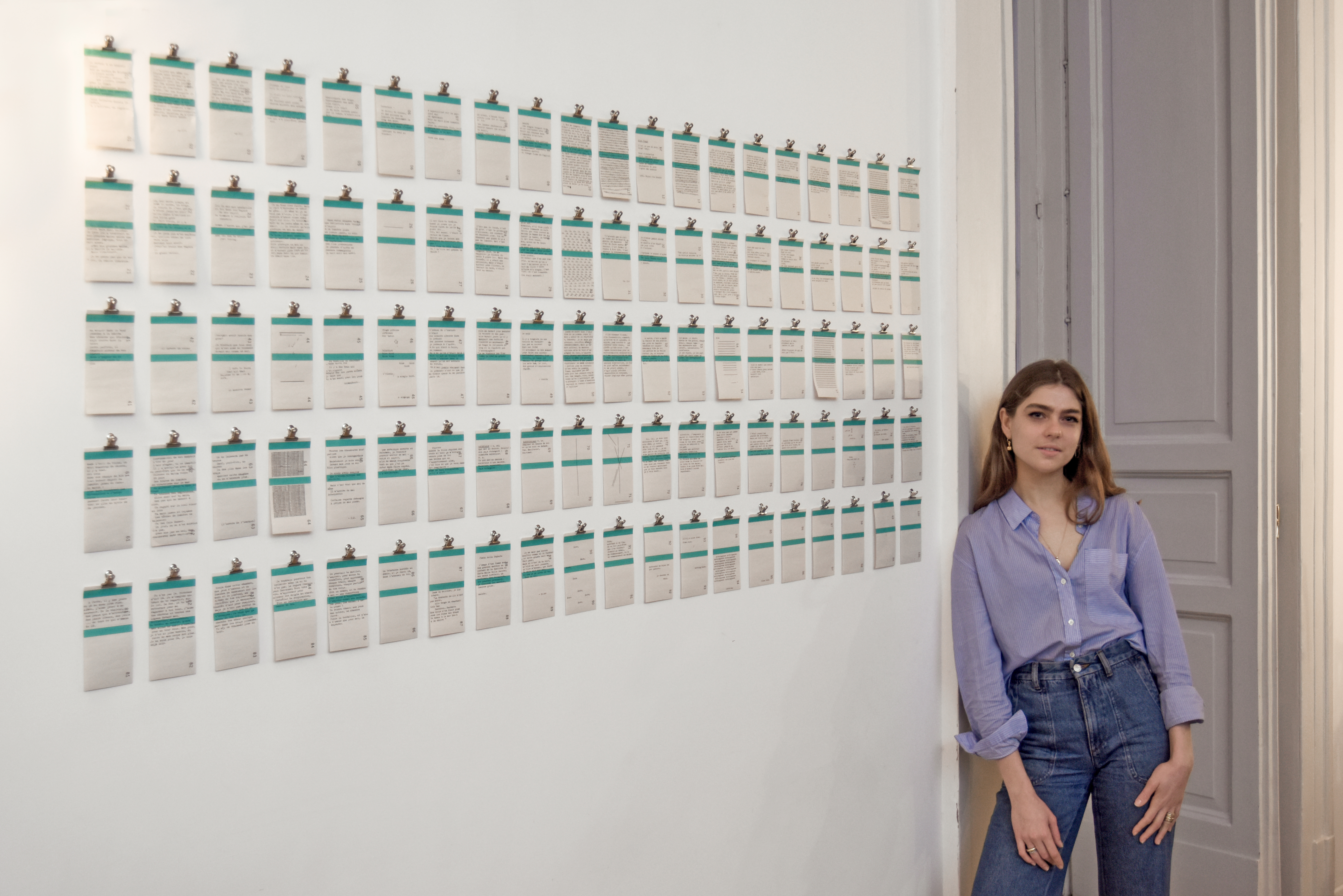
The artistic residency activity entrusts the winning artist with the mission to answer the question “What is your future vision of contemporary Naples?”. This question will be the leitmotif that will guide the various activities planned during the residency that will lead the artist to explore the Neapolitan territory and imagine it with a look towards the future, trying to solve the contemporary criticalities.
Sevana Holst, winning artist, declares:
“During my stay at SuperOtium, I would like to focus my research on a specific aspect of the city: where is the place and what is the role of the Word within the public space?” . Today the word is used as a tool for consumerism (see advertising) and to impose limits (see signs and prohibitions). Is there, then, a space where it can exist for no other purpose than its beauty?
My project starts from the observation and exploration of the city with the aim of expanding or creating a new space where the Word can exist for itself in contemporary Naples”.
Sevana Holst, is a French-American writer and visual poet who explores the limits and aesthetics of language by experimenting with visual and concrete poetry, inspired by poets such as Susan Howe, Paula Claire and Giulia Niccolai. Holst studied History at the Sorbonne and Persian Studies at INALCO (Institut National des Langues et Civilisations Orientales), beginning her professional life as a translator and freelance writer collaborating with theaters and artists in Paris. Through her work, she unites both the visual and literary realms in pursuit of a complete desacralization of both text and image.
Silent Art Explorer (SAE), is a private project supporting emerging art talent co-founded by emerging collector Giulio Raffaele and Aurora Rossini, a communications professional. SAE’s activity focuses on the work of emerging artists and on the role of the collector as a supporter of art projects – beyond the purchase of artworks. In addition to supporting creative talent, SAE combines the goal of supporting talent in professions related to the arts and culture sector, as well as facilitating valuable exchanges within the professional ecosystem.
ReA Arte Cultural Association, founded by a group of young female cultural entrepreneurs in January 2020, is the organizer of ReA! Art Fair. The annual event, which takes place in Milan’s Fabbrica del Vapore venue, aims to go beyond the traditional fair model, supporting – in an increasingly challenging market – transparent sales, flanked by adequate representation and fair value of the works. ReA! Art Fair creates a dialogue between deserving new talents, collectors, the public and numerous national and international institutions, with the aim of promoting emerging talents – through awarding prizes, organizing solo and group exhibitions and publishing catalogs.
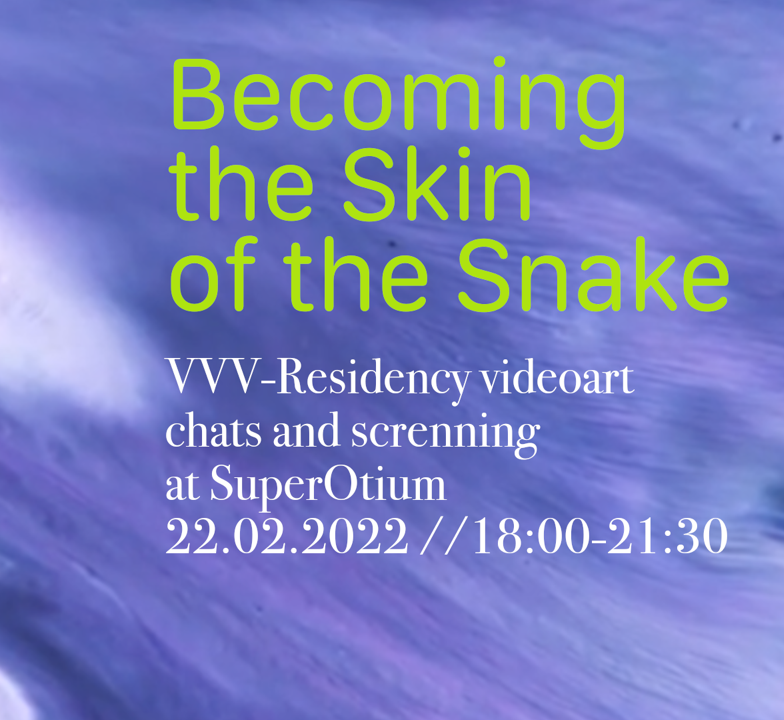
VisualcontainerTv International Videoart webchannel, curated by Alessandra Arnò, has been presenting videoart projects and festivals under the care of curators and festival directors, interviews, and monograph programs from all over the world, since 2009. It’s a big renowned cultural project made for videoart lovers, students, curators, and all audiences, a place where to find the best videoart selection for free and for cultural purposes. The project aiming to spread the fresh and latest researches in the videoart scenario under the care of visualcontainer and many other partners around the world into a overall view.
Vegapunk is an artist run space&time of sharing artistic practices. It is an extension of Simona Da Pozzo‘s artistic practice into the domain of curating driven by impromptu curiosities. The focus is on artistic practice as both an intellectual and physical process guided by dialogue (between people, formats, disciplines). Vegapunk tends to build collaborations with artists whose discourse stretches beyond the artistic frame to include researches entangled with the world, also in a social and political sense. The attention to the relationship between space and time, both in a physical and aesthetic sense, leads Vegapunk to favor time-based projects and to define Vegapunk as an artist- run-space-&-time. Vegapunk is a project born in the frame of www.ex-voto.org.
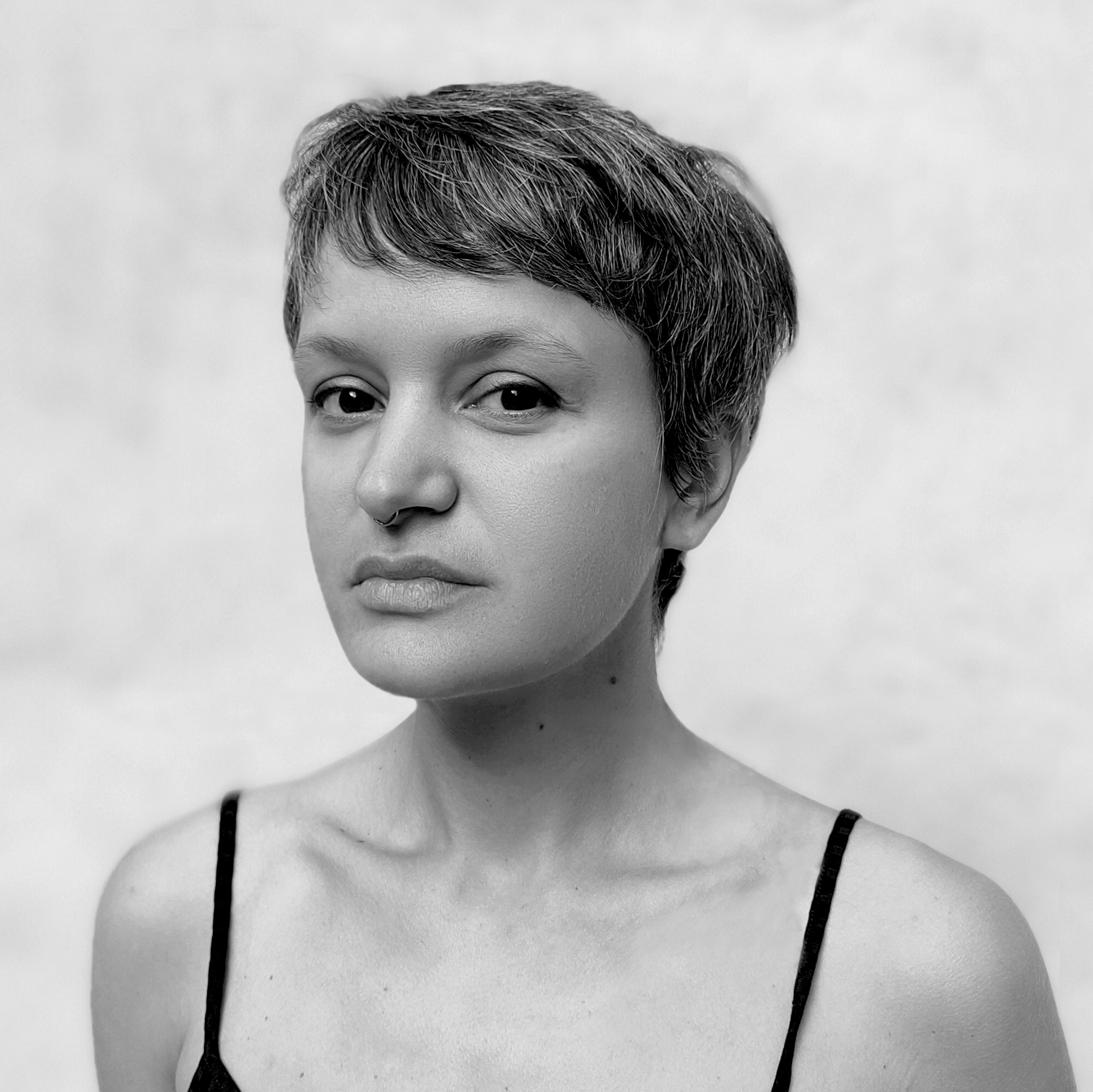
Her residency fits into this season’s theme Look Closer, an invitation to look closely at things to discover their details, depths and imperfections.
Martina Merlini’s work, starting from her research on the limit and its overcoming, on randomness contained in precisely defined forms, on the rational and the irrational, in Naples will be confronted with a profound research on the ‘void’ in a city where emptiness is something far removed from everyday experience (visual and perceptive) and is often feared.
In fact, this research will be declined in experiential, emotional, memory and architectural contests as fields of investigation for the production of a new work by the artist with the support of local craftsmen.
During her residency, the artist will question people, who will participate in the various activities or with whom he will come into contact, asking them to share indications of places, lived experiences, memories, emotions, which represent a void.
On the 11th of Jannuary an exhibition will display a selection of her previous works.
The exhibition will be an opportunity to get to know the artist’s work and to take part in the mapping of the places to which lived experiences, memories, emotions are linked, representing a “void” from which Martina Merlini will produce a new work guided by the artist Teresa Cervo, for the use of papier-mâché, and assisted by the Cerasa collective ceramics workshop.
To promote the meeting between the creative community in Naples and those coming from outside, we invited a dense network of realities linked to the world of cultural art to collaborate: Altofest (an international live art festival in close contact with the inhabitants whose private spaces become the place where performances take place and develop), Attiva Cultural (which develops projects related to the dissemination and promotion of contemporary art such as the Art Days – Napoli Campania and the Magazine Ōpēra), l’Arsenale di Napoli (a cultural startup that generates a Museum of Culture and Immaterial Arts of Naples and Campania), Open House Napoli (an original format that allows citizens to discover architectures and themes of the past the present and the future of the city), Silent Art Explorer (a project for the promotion and support of contemporary art and art workers), Studio Cervo (the studio of artists Erika Nevia Cervo and Fabrizio Cicero that opens up and meets with the city through the organisation of exhibitions and projects), Underneath the Arches/AquaAugusta (a site-specific contemporary art programme in the archaeological site of the Augustan aqueduct, in the Borgo Vergini-Sanità area).
During her stay in Naples, the artist will present some of her works, meet the local artistic and creative scene, and explore the area in search of ’emptiness’. During her presence, it will also be possible to make studio visits by appointment to view the artist’s portfolio and learn more about her work and research.
BIO
Martina Merlini, born in 1986 in Bologna, is an Italian artist who lives and works in Milan.
Her work starts from the influence of 1960s and 1970s graphics, from the simple and functional forms of the logos and patterns of those years; it passes through editorial graphics and is influenced by the imprint imposed by the design of exhibition spaces, ultimately presenting itself as an artistic production in constant evolution. Her works range from illustration to graphics, from street art to land art and tell of her harmonious relationship with nature.
Martina explores new techniques and materials – developing and refining her technique in recent years through the use of wax and enamel on poor substrates such as wood and paper – reflecting her search for formal balance and geometric harmony, while at the same time attempting to define a rawness that recalls the typical randomness of nature, but also the invisible rules that run through it.
Natural representations and abstract images coexist in her art in a continuous search for dynamic balance, achieved when rigorous, geometric lines are juxtaposed with the flow of natural instincts and impulses. As a careful researcher of human nature, Martina plays with geometric lines, investigating the notion of limits in a subtle and refined way. Perennially poised between the rational and the irrational, the artist uses dense and symmetrical pictorial strokes by nature to pursue her research.
Merlini’s works have been exhibited throughout Europe and in the United States, Mexico, Australia and Brazil. She has participated in several events and festivals, including Living Walls, the first street art festival made by women, in Atlanta, USA in 2012; she took part in the prestigious Le Mur in Paris in 2015; she did a residency in Queretaro, Mexico, in collaboration with Galerie Libertad in 2017 and a project with the Italian Consulate in Brazil and the Museu Naciolal de Belas Artes in Rio de Janeiro in 2019.

A Doll for a Closer Look
Artist Residency by Pierre-Antoine Vettorello
Part of the Cultural Program of SuperOtium
From February 15 to 25, 2024
Public Presentation Event on February 24, 2024, from 4:00 PM to 8:00 PM
Studio visits by appointment from February 15 to 24, 2024
At SuperOtium
via Santa Teresa degli Scalzi, 8 – 80135 Naples
A Doll for a Closer Look is the title of the artist residency featuring Pierre-Antoine Vettorello, who will animate the spaces of SuperOtium (art residency space and boutique hotel) from February 15 to 25, 2024.
On February 24, 2024, from 4:00 PM to 8:00 PM, a public event at SuperOtium will allow participants to engage with the artist’s research, featuring the presentation of a work created during the residency.
This project is part of the artist residency program at SuperOtium (a project by Nicola Ciancio and Vincenzo Falcione), curated by Nicola Ciancio, following the theme of this season, Look Closer, an invitation to examine things closely to discover details, depths, imperfections, and truly connect with the city. The residency program is under the Matronage of the Donnaregina Foundation for Contemporary Arts.
The project A Doll for a Closer Look is produced with the financial support of the European Union and the Goethe Institute.
Pierre-Antoine’s research bridges fashion design and art with a critical and aesthetic approach to narratives about diasporic communities and decoloniality. He favors textiles as his medium of choice, with the use of patterns and prints. The title of the residency is derived from employing dolls to express a narrative of fashion history, inspired by Saint-Louis’ fashion historian Fatou Niang Siga, and how these miniature figures can also symbolize messages of existence and resistance within the urban environment.
During his residency at SuperOtium, the artist will delve into the look closer theme and present a work created during the residency through encounters with the Senegalese community in Naples and, more broadly, with individuals whose stories he will encounter. Starting from the historical experience of Senegalese women practicing textile craftsmanship during colonial times, the artist’s research emphasizes allowing the emergence of alternative narratives, and a collective memory.
The main and essential partner for the project is Senaso, a Social Enterprise founded by Pierre Preira and Louis Benjamin Ndong, both of Senegalese origin, living in Naples for almost 20 years. They have decided to invest in creativity and opportunities in the local area. Thanks to their support, Pierre-Antoine will engage with the Senegalese community in Naples to develop his research and investigate Naples’ crossroads of cultures.
To promote interaction between the creative community in Naples and those from outside, a network from to the world of art and culture has been invited to collaborate: Ex-Voto, radical public culture project promoter (developing participatory cultural and artistic projects and networks as a tool for collective development), Altofest (international live art festival in close contact with residents whose private spaces become the venue for performances), the Arsenale di Napoli (cultural startup generating a Museum of Culture and Immaterial Arts of Naples and Campania), Circolo Scandinavo (a Scandinavian association based in Rome that promotes cultural exchanges between the Nordic regions, Italy and the rest of the world), Progetto Museo (formed by art historians to protect, enhance and promote the cultural and museum heritage of Naples), Silent Art Explore (project promoting and supporting contemporary art and art workers), Studio Cervo (studio of artists Erika Nevia Cervo and Fabrizio Cicero that opens up and interacts with the city through the organization of exhibitions and projects), Underneath the Arches/AquaAugusta (site-specific contemporary art program in the archaeological site of the Augustan aqueduct, in the Borgo Vergini-Sanità area).
Throughout the residency, studio visits can be scheduled by appointment to view Pierre-Antoine Vettorello’s portfolio and learn more about his works and research.
Pierre-Antoine Vettorello is a Brussels-based designer, teacher, and PhD researcher at the Sint Lucas School of Arts and the University of Antwerp. He studied textiles in Paris, fashion design at the Department of Fashion in Antwerp (MA), and artistic research at Sint Lucas (MA) in Antwerp. In his current doctoral research, he explores the intersection of fashion and decoloniality, using family photos and indigo dye to create replicas of clothing worn by Senegalese Women. In 2022, Vettorello conducted research on African fabric shops in the Parisian neighborhood of Goutte d’Or, delving into the history of fabric stores and how they shape narratives with local diasporic communities. This research resulted in a solo exhibition at Cité Internationale des Arts in Paris. Vettorello teaches at the Royal Academy of Fine Arts in Brussels and the Marangoni Institute in Paris.
SuperOtium is a house in the heart of Naples, founded by Nicola Ciancio and Vincenzo Falcione, designed to welcome tourists, artists, travelers, and creatives. A meeting place where artist residencies, events, exhibitions, and accommodation coexist to inspire artists and creatives and challenge the assumptions of travelers, proposing new perspectives through which to view the city. The SuperOtium residency program has hosted, among others, Kensuke Koike, Pietro Gaglianò, Massimo Uberti, Hypereden, Bianca Felicori (Forgotten Architecture), Paz Ortùzar (in collaboration with the Cervantes Institute of Naples), Giovanna Silva (in collaboration with Lorenzo Xiques), Nuvola Ravera (in collaboration with Made in Cloister), Blase (in collaboration with ShowDesk), Yasser Almaamoun (in collaboration with the Goethe Institut), Khaled El Mays (in collaboration with Edit Napoli).

Pigments is the title of the residency that from 2 to 12 September 2024 will involve the artist Alissa Marchenko and the spaces of SuperOtium (art residency space and boutique hotel).
This residency aims to give space to the artist’s research, which seeks to crystallise through her works the different experiences and places that make up her identity, in search of stable references to which to refer.
Alissa Marchenko is originally from Ukraine but lives between Italy and Poland, thus having affective and cultural references in different places that give her the possibility of constructing a fluid identity that is nourished by her ‘nomadic’ experience.
Thus, in all the places where she lives or where her work or affections take her, she searches for stories and natural elements that become the ‘pigment’, the basic element, that she uses to create her works.
This leads her in different contexts to focus on natural elements, such as herbs and earth that represent the places she passes through and that shape her identity.
During her residency in Naples, supported by various local partner organisations, she will meet the migrant communities in Naples, explore the natural context and the indigenous plants and those that have arrived over the centuries, the cultural and artistic context of the city, and produce a number of works that will be part of the exhibition that we will inaugurate on 11 September 2024.
On that date, in fact, we will inaugurate an exhibition composed of various artworks by the artist, linked to the theme of his research, which will be structured between artworks that have already been realised, with a more ‘sculptural’ approach, and a series of drawings, realised during the residency, thanks to the ‘pigments’ created.
This project is part of the artist residency programme curated by Nicola Ciancio for SuperOtium (a project by Nicola Ciancio and Vincenzo Falcione) following the theme Look Closer, an invitation to look closely at things in order to discover their details, depths, imperfections and really get in touch with the city. The residency is developed in collaboration with the BIANCHIZARDIN Gallery. The residency programme received the Matronato della Fondazione Donnaregina per le arti contemporanee.
BIOS
Alisa Temchenko, known in art circles as Alissa Marchenko, was born in 1989 in Kyiv, Ukraine, and currently lives and works in Milan, Italy. After graduating with a Bachelor’s and Master’s degree in sculpture from the Academy of Fine Arts and Architecture in her hometown, Alissa furthered her studies and completed a Master’s degree in New Media Art at the Polish-Japanese Academy of Information Technology in Poland in 2021.
Her artistic journey began in Italy, where in 2020 she presented her first performance, ‘ORIGINE’, at the acclaimed Accademia di Belle Arti in Verona during a cultural exchange programme. In the same year, she exhibited her works in the first edition of the REA Art Fair in Milan, Italy. In 2021, Alissa was honoured with the Grand Prize for her project ‘NOWhere’ at the ARSLATRANS art festival in Krakow, Poland. Motivated by her artistic aspirations, she made the decision to move to Milan in 2022 to further develop her creative career.
Currently, Alissa Marchenko collaborates with the Galleria d’Arte Contemporanea BianchiZardin in Milan, as well as being involved in projects with Nicoletta Rusconi Art Projects, exhibiting her works both in Italy and Switzerland, including the Engadin Art Weekend.
Through her art practice, Alissa explores the interaction between her inner and outer worlds. She investigates the impact of emotional memories acquired through experiences in space and time on consciousness and the formation of individual identities. Her works embody metaphors for feelings, enabling her to communicate pure, clear and intense emotions to viewers. With her interdisciplinary approach, Alissa often combines photography with sculptural and performance installations, offering a unique interpretation of the distinctive.
SuperOtium is a house in the heart of Naples, founded by Nicola Ciancio and Vincenzo Falcione, designed to welcome tourists, artists, travelers, and creatives. A meeting place where artist residencies, events, exhibitions, and accommodation coexist to inspire artists and creatives and challenge the assumptions of travelers, proposing new perspectives through which to view the city. The SuperOtium residency program has hosted, among others, Kensuke Koike, Pietro Gaglianò, Massimo Uberti, Hypereden, Bianca Felicori (Forgotten Architecture), Paz Ortùzar (in collaboration with the Cervantes Institute of Naples), Giovanna Silva (in collaboration with Lorenzo Xiques), Nuvola Ravera (in collaboration with Made in Cloister), Blase (in collaboration with ShowDesk), Yasser Almaamoun (in collaboration with the Goethe Institut), Khaled El Mays (in collaboration with Edit Napoli).

PLACES, RITUALS AND DESIRES
Artist residency Matilde Cassani
10 – 16 December 2024
restitution event 15 December 2024 – h. 5.00 pm
C/O SuperOtium
Via Santa Teresa degli Scalzi, 8
80135 Naples
“Places, Rituals, and Desires” is the title of the artist residency and exhibition featuring Matilde Cassani, which will take place at SuperOtium from December 10 to 16, 2024.
During her residency, the artist will delve deeper into her research, engaging with SuperOtium’s cultural, artistic, and social network. On December 15, the day before the date of the ritual of the liquefaction of San Gennaro’s blood, she will present her perspective on the city with an exhibition. This will include a mix of her pre-existing works as well as new studies inspired by her time in Naples.
Cassani, who is both an artist and designer, will inhabit the spaces of SuperOtium (an art residency space and boutique hotel), both during her stay and to present her work to the public.
In keeping with her interdisciplinary research between art, architecture, and anthropology, Matilde Cassani will explore the intertwining of pagan and Catholic rituals in Neapolitan culture—rituals that have persisted over time, often linked to dreams, protection from disasters, and more. She will examine how the traces of this overlap continue to shape public spaces, revealing the desires of its inhabitants who entrust their hopes to saints and magic.
The artist’s investigation will begin with the cult of the “anime pezzentelle” (poor souls) through a collaboration with the Santa Maria delle Anime del Purgatorio ad Arco Museum Complex, expanding to explore the representations of these souls in votive shrines scattered throughout the streets of the city.
This event is part of the cultural program curated by Nicola Ciancio for SuperOtium (a project conceived by Nicola Ciancio and Vincenzo Falcione), following the theme Look Closer, an invitation to close observation, encouraging the discovery of details, depth, and imperfections.
The residency program has received the endorsement of the Fondazione Donnaregina for Contemporary Arts.

Artist residency Selma Gültoprak
in dialogue with Lorenzo Xiques Lopez
18 – 28 February 2025
C/O SuperOtium
Via Santa Teresa degli Scalzi, 8
80135 Naples
From February 18 to 28, 2025, SuperOtium will host the artist residency of Selma Gültoprak, whose practice explores the intersections of culture, politics, and storytelling through mixed-media installations and objects. During her stay in Naples, Selma will embark on a new creative journey, drawing inspiration from the city’s complexities and hidden narratives.
Through collaboration with the curator and activist Lorenzo Xiques Lopez, and encounters with the SuperOtium art community, Selma will focus her research on tools of resistance and counter-narratives that challenge socially imposed roles and structures—particularly those related to gender identities. She will explore these themes through micro-narratives, personal stories, spaces, places, events, and people. In Naples, resistance to gender conformity has deep historical roots and continues to evolve, offering a model for broader struggles—where the body itself becomes a site of resistance.
Therefore the collaboration with Lorenzo will not only serve as a means to explore forms of activism within the queer world but will also provide a lens through which to examine how the body itself becomes a form of resistance—an instrument for constructing new narratives.
“Without seeking to define a fixed iconography or a singular truth, my research does not follow a predetermined path, because there is not just one truth, but many—constantly shifting and transforming. My work embraces partiality and incompleteness. Starting from the complexity of identities that challenge conventional gender binaries, I will seek to connect the real with the unreal, and the hybrid, allowing myself to be guided by the stories and people I encounter in search of alternative narratives.”
— Selma Gültoprak
This collaboration will culminate in an event on February 25, featuring an exhibition of Selma’s work Little Love Monument (Selma Gültoprak x bond_free) alongside a dialogue with Lorenzo Xiques.
Little Love Monument, was cooperative work with @bond_free, consists of a series of suspended objects made from latex harnesses, mouth spreaders, and chains. Each piece carries a provocative label, reflecting themes of transformation, desire, and bodily autonomy. This work resulted out of big installation “love Monument (for Dominatrix)”.
This residency is part of SuperOtium’s cultural program, curated by Nicola Ciancio, and aligns with this season’s theme, “Ricami”—a metaphor for the delicate and intricate traces left behind after a journey or an encounter.
Selma Gültoprak’s work has been exhibited at Kunstmuseum Bochum, K21 Düsseldorf, Kölnischer Kunstverein, and other major institutions. Her socially engaged, experimental practice transforms diversity into imaginative and inclusive spaces, fostering dialogues with communities and individuals worldwide.
Lorenzo Xiques Lopez (Caracas 1983) is a curator, researcher and queer activist present in the Naples area. He is interested in institutional critique, gender-studies and queer ecology applied to the field of Contemporary Arts with a multidisciplinary, transfeminist and decolonial approach.

Artist residency Serena Fineschi
19 – 27 May 2025
C/O SuperOtium
Via Santa Teresa degli Scalzi, 8
80135 Naples
From May 19 to 27, 2025, SuperOtium will host the residency of artist Serena Fineschi, who lives and works between Siena and Brussels.
In her work, the body is both dimension and measure, a blend of natural energy and human creation. Fineschi’s practice is a carnal extension—a process of giving and receiving, breaking through traditional performance mechanisms. Deeply engaged with the history of painting, she challenges and reinterprets it, working with unexpected and discarded materials, drawn from our contemporary culture of consumption.
Her practice is a form of alchemy, where matter interacts with the artist’s body, offering an experience that embraces the physical, intellectual, and social dimensions of our time. The formal structures of her work expand and contract, creating tragically euphoric fractures—spaces of transition and reflection, opening up new narratives and tangible, intimate, and collective experiences.
Fineschi’s work is included in major public and private collections, such as: Fréderic de Goldschmidt Collection (Brussels), Farnesina Collection (Italy’s Ministry of Foreign Affairs, Rome), Gallerie d’Italia at the Italian Embassy (Brussels), Ibsen Collection (Copenhagen), Museo Santa Maria della Scala (Siena), Fondazione Pino Pascali (Polignano a Mare, Italy).
Her works have been showcased in leading institutions across Europe and the U.S., including: CENTRALE for Contemporary Art (Brussels), MANA Contemporary (Jersey City, USA), Baert Gallery (Los Angeles, USA), La Triennale di Milano (Milan), Uffizi Galleries (Florence), Fondation Thalie (Brussels), Old Masters Museum, Royal Museums of Fine Arts of Belgium (Brussels), Biennale Manifesta12 (Palermo), Venice Biennale of Architecture (Venice)
Fineschi is co-founder of Grand Hotel, a traveling platform that collects and hosts artistic exchanges in both institutional and independent spaces since 2014. In 2016, she conceived Caveau, a vault embedded in Siena’s medieval walls that preserves ideas. In 2019, she co-founded MODO asbl, a Brussels-based cultural association dedicated to contemporary art, alongside Alessandro Scarabello and Laura Viale.
(Photo by Elena Foresto)
Our home gallery is enriched with every encounter, residency and collaboration with works on consignment or for viewing. The common denominator between all the selected works is the attempt to stimulate the observer to search for new perspectives from which to contemplate Naples and more.

50×32 cm (x2)
mixed technique on paper
Napoli, 2024
Artwork on consignment.
For more info write to project@superotium.it
BIO
Alisa Temchenko, known in art circles as Alissa Marchenko, was born in 1989 in Kyiv, Ukraine, and currently lives and works in Milan, Italy. After graduating with a Bachelor’s and Master’s degree in sculpture from the Academy of Fine Arts and Architecture in her hometown, Alissa furthered her studies and completed a Master’s degree in New Media Art at the Polish-Japanese Academy of Information Technology in Poland in 2021.
Her artistic journey began in Italy, where in 2020 she presented her first performance, ‘ORIGINE’, at the acclaimed Accademia di Belle Arti in Verona during a cultural exchange programme. In the same year, she exhibited her works in the first edition of the REA Art Fair in Milan, Italy. In 2021, Alissa was honoured with the Grand Prize for her project ‘NOWhere’ at the ARSLATRANS art festival in Krakow, Poland. Motivated by her artistic aspirations, she made the decision to move to Milan in 2022 to further develop her creative career.
Currently, Alissa Marchenko collaborates with the Galleria d’Arte Contemporanea BianchiZardin in Milan, as well as being involved in projects with Nicoletta Rusconi Art Projects, exhibiting her works both in Italy and Switzerland, including the Engadin Art Weekend.
Through her art practice, Alissa explores the interaction between her inner and outer worlds. She investigates the impact of emotional memories acquired through experiences in space and time on consciousness and the formation of individual identities. Her works embody metaphors for feelings, enabling her to communicate pure, clear and intense emotions to viewers. With her interdisciplinary approach, Alissa often combines photography with sculptural and performance installations, offering a unique interpretation of the distinctive.
50×64 cm
mixed technique on paper
Napoli, 2024
Artwork on consignment.
For more info write to project@superotium.it
BIO
Alisa Temchenko, known in art circles as Alissa Marchenko, was born in 1989 in Kyiv, Ukraine, and currently lives and works in Milan, Italy. After graduating with a Bachelor’s and Master’s degree in sculpture from the Academy of Fine Arts and Architecture in her hometown, Alissa furthered her studies and completed a Master’s degree in New Media Art at the Polish-Japanese Academy of Information Technology in Poland in 2021.
Her artistic journey began in Italy, where in 2020 she presented her first performance, ‘ORIGINE’, at the acclaimed Accademia di Belle Arti in Verona during a cultural exchange programme. In the same year, she exhibited her works in the first edition of the REA Art Fair in Milan, Italy. In 2021, Alissa was honoured with the Grand Prize for her project ‘NOWhere’ at the ARSLATRANS art festival in Krakow, Poland. Motivated by her artistic aspirations, she made the decision to move to Milan in 2022 to further develop her creative career.
Currently, Alissa Marchenko collaborates with the Galleria d’Arte Contemporanea BianchiZardin in Milan, as well as being involved in projects with Nicoletta Rusconi Art Projects, exhibiting her works both in Italy and Switzerland, including the Engadin Art Weekend.
Through her art practice, Alissa explores the interaction between her inner and outer worlds. She investigates the impact of emotional memories acquired through experiences in space and time on consciousness and the formation of individual identities. Her works embody metaphors for feelings, enabling her to communicate pure, clear and intense emotions to viewers. With her interdisciplinary approach, Alissa often combines photography with sculptural and performance installations, offering a unique interpretation of the distinctive.

Discover our activities designed to discover Naples through its sites, itineraries, activities, and through the eyes of the locals who experience it every day and will make your journey truly special